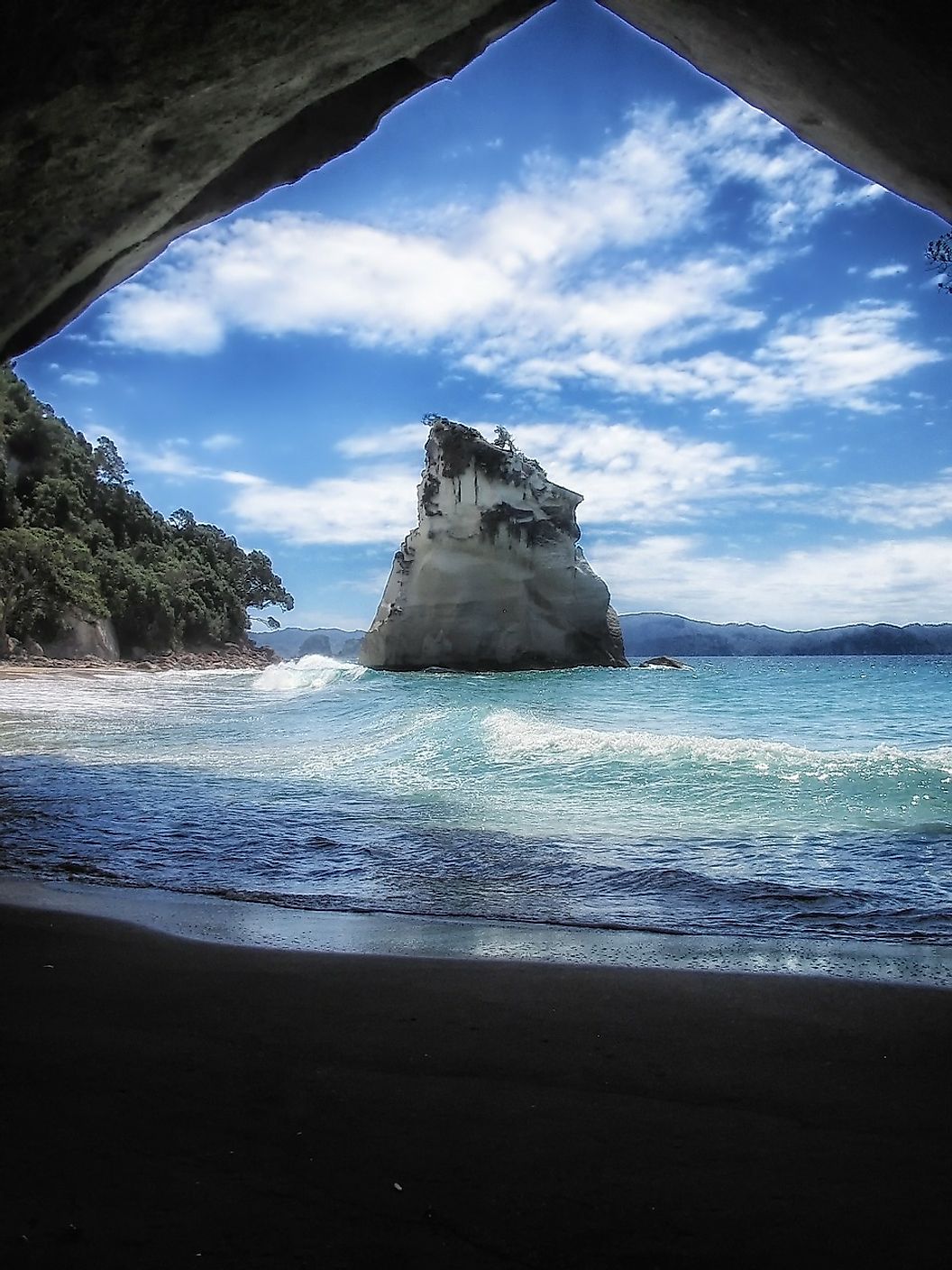Cathedral Cove, New Zealand - Unique Places around the World

5. Description
Te Whanganui-A-Hei (Cathedral Cove) Marine Reserve is located on the Coromandel Peninsula in New Zealand and covers around 840 hectares (2,100 acres) in area. More specifically, the cove is located on the east coast of Coromandel Peninsula between Hahei and Cook Bluff, covering about nine square kilometres. With the temperatures in the Coromandel ranging between 75.2 and 87.8 degrees Fahrenheit (24-31 degrees Celsius) from December to February and 53.6-57.2 degrees Fahrenheit (12-14 degrees Celsius) primarily during June and August. Cathedral Cove can be visited any time of the year. As part of Coromandel Peninsula, the cove is located in the contiguous New Zealand which makes it accessible through major state highways.
4. Tourism
Since the Coromandel is one of the most popular tourist destinations in New Zealand, Cathedral Cove alone attracts about 150,000 visitors each year. International tourists are required to arrive via the international airport of either Auckland or Hamilton to reach the nearby town of Thames. Known as the “gateway to Coromandel”, Thames is situated about 70 miles (113 kilometers) from Auckland and about 66.5 miles (107 kilometers) from Hamilton. From Thames, tourists can catch private vehicles or buses, tickets to which can be obtained online or through authorized agents located all over the country.
3. Uniqueness
The shallow waters around Stingray Bay (Te Karaka) and the western side of the Mahurangi makes for especially favourable location for snorkeling and swimming. Much of the cove is suitable for diving. As a marine reserve, the cove is an important sight for the preservation of sponge gardens and reef systems. In addition, while boating is allowed, boat speeds are not allowed to exceed the limit of 5 knots (or 5.75 mph) as it might harm or disturb the local marine life. The cove also provides many scenic walking trails adjacent to the reserve.
2. Habitat
Cathedral Cove was turned into a marine reserve in 1992, meaning that the ecological habitat of its area is protected from human activities such as fishing and souvenir hunting, or any other activities perceived to be damaging to the marine life. As a consequence, the cove is home to a rich and unique form of marine habitation native to the reserve. Boulder banks, steep rocky cliffs and convoluted reefs are home to this aquatic community. Crayfish and black angelfish are kept hidden in the cracks of the reefs, away from human intervention. Corals, marine invertebrates found deep within bodies of water, are found closer to the surface in Poikeke Island cave. Brittle Stars (a close relative of starfish) may also be seen on the rocky platforms. Even predators such as leatherjack fish are able to get their easy pickings from a range of smaller species. Seaweeds are allowed to flourish freely in the presence of light, which nurtures them.
1. Threats
Though the area was ecologically threatened beforehand, as a marine reserve the aquatic life within the radius of Cathedral Cove is now protected. Strict restrictions mean that human activity is limited to harmless leisure activities such as swimming and snorkeling. Conversely, the aquatic creatures which leave in this area pose no significant danger to human beings.











